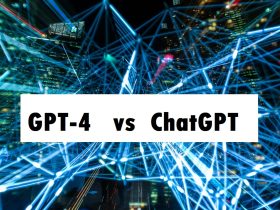What is GPT?
At its core, GPT stands for Generative Pre-trained Transformer. It’s a type of language model that leverages deep learning techniques to generate human-like text. Imagine a digital wordsmith that can craft coherent sentences, paragraphs, and even longer passages of text that sound remarkably like they were written by a person.
Why is GPT Important?
GPT’s importance lies in its ability to comprehend and produce natural language at an unprecedented level. This breakthrough has far-reaching implications for human-computer interaction, content generation, language translation, and more. GPT models are designed to bridge the gap between human communication and artificial intelligence, making technology more accessible and user-friendly.
Use Cases of GPT:
GPT’s versatility has spawned a multitude of applications across industries:
- Content Generation: GPT can create blog posts, articles, and marketing copy, freeing up human writers for more creative tasks.
- Chatbots and Virtual Assistants: It powers conversational AI, enhancing customer support, and providing personalized interactions.
- Language Translation: GPT models excel at translating text between languages, breaking down language barriers.
- Code Completion: GPT can assist programmers by suggesting code snippets and completing lines of code.
- Creative Writing: Some artists and writers collaborate with GPT to generate poetry, stories, and song lyrics.
- Medical Text Analysis: GPT aids in extracting valuable insights from medical texts, contributing to research and diagnostics.
How does GPT work?
Though it’s accurate to describe the GPT models as artificial intelligence (AI), this is a broad description. More specifically, the GPT models are neural network-based language prediction models built on the Transformer architecture. They analyze natural language queries, known as prompts, and predict the best possible response based on their understanding of language.
To do that, the GPT models rely on the knowledge they gain after they’re trained with hundreds of billions of parameters on massive language datasets. They can take input context into account and dynamically attend to different parts of the input, making them capable of generating long responses, not just the next word in a sequence. For example, when asked to generate a piece of Shakespeare-inspired content, a GPT model does so by remembering and reconstructing new phrases and entire sentences with a similar literary style.
There are different types of neural networks, like recurrent and convolutional. The GPT models are transformer neural networks. The transformer neural network architecture uses self-attention mechanisms to focus on different parts of the input text during each processing step. A transformer model captures more context and improves performance on natural language processing (NLP) tasks. It has two main modules, which we explain next.
Encoder
Transformers pre-process text inputs as embeddings, which are mathematical representations of a word. When encoded in vector space, words that are closer together are expected to be closer in meaning. These embeddings are processed through an encoder component that captures contextual information from an input sequence. When it receives input, the transformer network’s encoder block separates words into embeddings and assigns weight to each. Weights are parameters to indicate the relevance of words in a sentence.
Additionally, position encoders allow GPT models to prevent ambiguous meanings when a word is used in other parts of a sentence. For example, position encoding allows the transformer model to differentiate the semantic differences between these sentences:
A dog chases a cat
A cat chases a dog
So, the encoder processes the input sentence and generates a fixed-length vector representation, known as an embedding. This representation is used by the decoder module.
Decoder
The decoder uses the vector representation to predict the requested output. It has built-in self-attention mechanisms to focus on different parts of the input and guess the matching output. Complex mathematical techniques help the decoder to estimate several different outputs and predict the most accurate one.
Compared to its predecessors, like recurrent neural nets, transformers are more parallelizable because they do not process words sequentially one at a time, but instead, process the entire input all at once during the learning cycle. Due to this and the thousands of hours engineers spent fine-tuning and training the GPT models, they’re able to give fluent answers to almost any input you provide.
How was GPT-3 trained?
In a published research paper, researchers described generative pretraining as the ability to train language models with unlabeled data and achieve accurate prediction. The first GPT model, GPT-1, was developed in 2018. GPT-4 was introduced in March 2023 as a successor to GPT-3.GPT-3 was trained with over 175 billion parameters or weights. Engineers trained it on over 45 terabytes of data from sources like web texts, Common Crawl, books, and Wikipedia. Prior to training, the average quality of the datasets was improved as the model matured from version 1 to version 3.
GPT-3 trained in a semi-supervised mode. First, machine learning engineers fed the deep learning model with the unlabeled training data. GPT-3 would understand the sentences, break them down, and reconstruct them into new sentences. In unsupervised training, GPT-3 attempted to produce accurate and realistic results by itself. Then, machine learning engineers would fine-tune the results in supervised training, a process known as reinforcement learning with human feedback (RLHF).
You can use the GPT models without any further training, or you can customize them with a few examples for a particular task.
Conclusion:
Generative Pre-trained Transformers have ushered in a new era of human-computer interaction and language AI. From its inception to its incredible applications, GPT’s journey showcases the remarkable progress we’ve made in harnessing artificial intelligence to mimic and understand human language. As we move forward, the potential for GPT’s impact continues to expand, with innovations yet to be imagined.








Leave a Reply